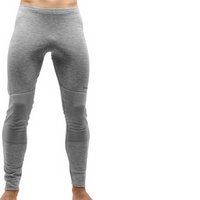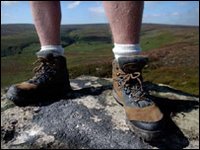Ding ding.....3 month warning bell
 3 months from today we'll be flying out to do battle with Kilimanjaro. That's scarily close and what seemed like loads of time to get fit, raise money, buy kit and steel nerves has already disappeared more quickly than Ian Dowie from Charlton....or England's chances of keeping hold of the Ashes.
3 months from today we'll be flying out to do battle with Kilimanjaro. That's scarily close and what seemed like loads of time to get fit, raise money, buy kit and steel nerves has already disappeared more quickly than Ian Dowie from Charlton....or England's chances of keeping hold of the Ashes. Apart from layers and pricks, what have we got to organize in the way of kit and logistics to try and make sure that we come back in one piece....?
According to our tour leaders from Explore:
Part 1 - clothing & footwear:
Walking boots: we strongly recommend walking in good boots. Trainers, tennis shoes or similar do not give the ankle support needed. Many people now trek in lighter weight Goretex or leather boots. Avoid the type of boot often found in high street shoe shops that are simply cheap trainers with a higher canvas side sewn on - they give little support (like Man United fans feasting on prawn sandwiches) and will probably not last the trek. It's a good idea to carry your boots in your hand luggage (terrorist restrictions permitting) on international flights or wear them - should your luggage be delayed, your well broken in boots are irreplaceable. Gaiters are useful to keep snow and scree out of your boots.
Trainers or trekking sandals: useful around camp, in towns and when travelling. But they afford little protection from stubbing of toes when walking around rock-strewn campsites at night.
Socks: best to wear a pair of liner socks under a pair of fairly thick loop stitch socks. This helps to protect against blisters. Avoid nylon socks...they are abrasive, don't breathe well and can cause blisters.
Jacket: after sunset, temperatures can fall below freezing. A very warm jacket is the most convenient way of keeping warm when the temperature plummets.
Waterproofs: breathable jacket and trouser-type waterproofs made from material like Goretex not only protects against rain and wind, but also stops you from overheating. They breathe and avoid condensation that you'll get from nylon waterproofs.
Long trousers: light trekking trousers are best for everyday walking. Avoid jeans...cumbersome when wet!
Thick sweaters & fleece jackets: essential for very cold nights at altitude. Make sure your waterproof jacket is loose enough to wear over your sweater and/or (5) fleeces.
Thermal underwear: long sleeve tops and (sexy) "long john" legging thermal underwear is essential.

Shorts: can be very comfortable to walk in but you must carry long trousers with you in case of sunburn or cold.
Waterproof gloves, a warm scarf and a warm hat: especially useful in the mornings and evenings at higher altitudes and essential for summit night. Lightweight gloves or mittens are not practical. Also, bring a scarf to cover your neck and a warm hat/balaclava.



0 Comments:
Post a Comment
<< Home